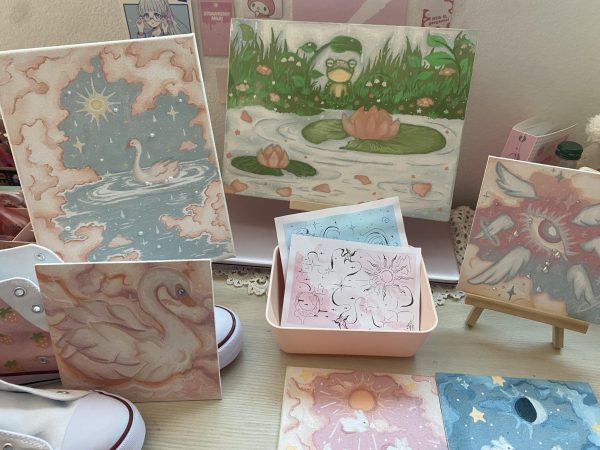Ava’s Column: the decline of romance films
A month ago, I watched what is likely the worst movie trailer I have ever seen for a movie titled Shotgun Wedding, and it made me think about the romance genre as a whole. One thing led to another, and I started to think about why so many awful romance films and novels have been released in the past ten years, and why romance films of generations past seem unbelievably better than current ones. I began to wonder about the history of the romance genre itself. What occurred that led to the release of classic pieces of romance media? Does this answer the question as to why present romance media is low-quality? To find the answers to my questions, I researched, starting from the beginning.
In order to understand the history of romance movies, it is important to understand the history of romance literature. The first appearance of romantic literature has been traced back to the Middle Ages. . Medieval Romance centered around epic tales of chivalry, featuring knights and other features of life during the Middle Ages. The romance itself entailed courtship, since courtship was the societal expectation for relationships at the time.
Medieval Romance Literature phased out after the release of Don Quixote in 1605, which satirized the tales of chivalry popular in this era of romance. Don Quixote popularized realism, which Medieval Romance lacked. Gothic writers started to take tales of romance and make them dark and disturbed, leading to the creation of beloved classics in Gothic Literature, such as Frankenstein. This marked the release of a new subgenre that would become even more popular in the romance film industry: gothic romance.
These pieces of Gothic Literature were the only examples of romance-adjacent literature released until the late-18th century. This new era of romance includes the first examples of the modern romance novel. Victorian romance novels are now considered conservative by today’s standards but were, at the time, progressive. They allowed women to become professional authors during a time when women did not work. The main characters of these novels either ended up married or dead, because why would anybody want to read about some old twenty-something spinster? As contradictory as this may sound, these novels were used as a way to escape the societal expectations of marriage. While there was still an expectation to one day get married, romance novels during this era made the notion of marrying someone out of love, not solely for the purpose of gaining wealth or social status, further discussed.
Around the 20th century was when romance films were produced. Like romance novels, romance films were used as a form of escapism. Many romance films from both the 20th and 21st centuries, such as Philadelphia, Moonlight and Roman Holiday, challenged existing issues surrounding class, race and sexuality at the time of their release.
Romance films also differed from romantic literature by creating their own sub-genres of romance: romantic dramas and romantic comedies. These two sub-genres battled it out in terms of popularity throughout all of the 20th century in response to major world events. In the United States, more romantic dramas were released in times of social distress. Many would argue that romantic dramas hit their zenith during World War Two. Romantic comedies, on the other hand, were generally released during times of “prosperity” in the United States, to project the country’s overall mood.
So, how does all of this history answer the question as to why recent romance media is lackluster? Throughout history, romance media challenged what was socially acceptable, and caused conversations while still being digestible and, for the most part, mainstream. Because of romance media’s conservative undertone, it elicited conversation from people who would otherwise not question social issues.
Romance films definitely had, and still have, room to improve when it comes to their portrayal of under-represented groups of people (cough cough Sixteen Candles, another awful romance movie), and at times promote detrimental ideas of what a healthy relationship is to younger viewers. But this influence can be turned on its head. When that power is used for the greater good, romance films can be effective in positively changing people’s perspectives. Instead of taking advantage of this, romance media has entered a lull with recycled conversations and movie concepts from decades prior.
I hope this lull in the romance genre will end soon. I want to be able to go to a movie theater, eat some popcorn and enjoy the newest rom-com without thinking to myself, “this movie sucks!”
Your donation will support the student journalists of Hart High School - CA. Your contribution will allow us to cover our the cost of our website and print editions.

